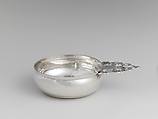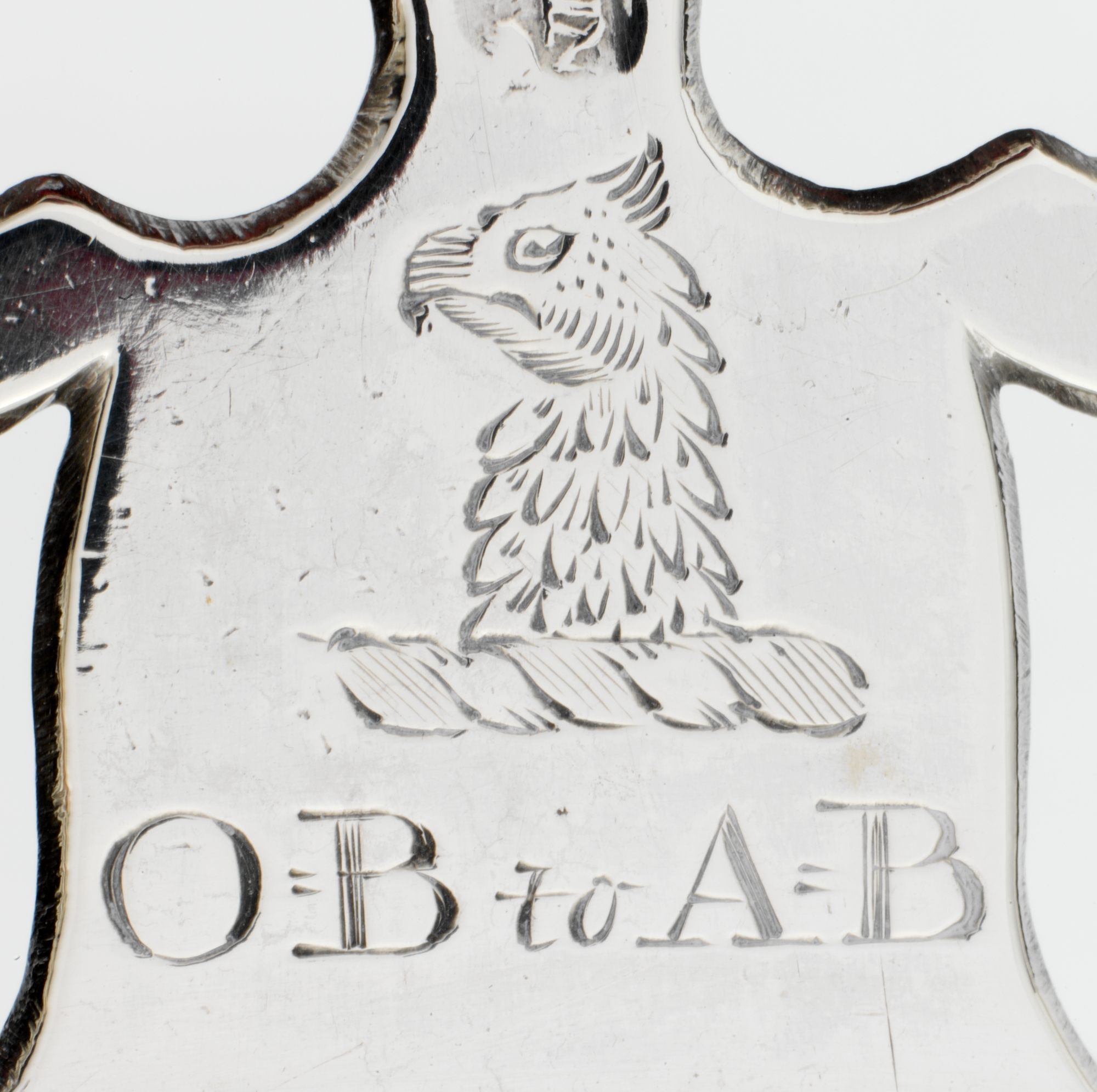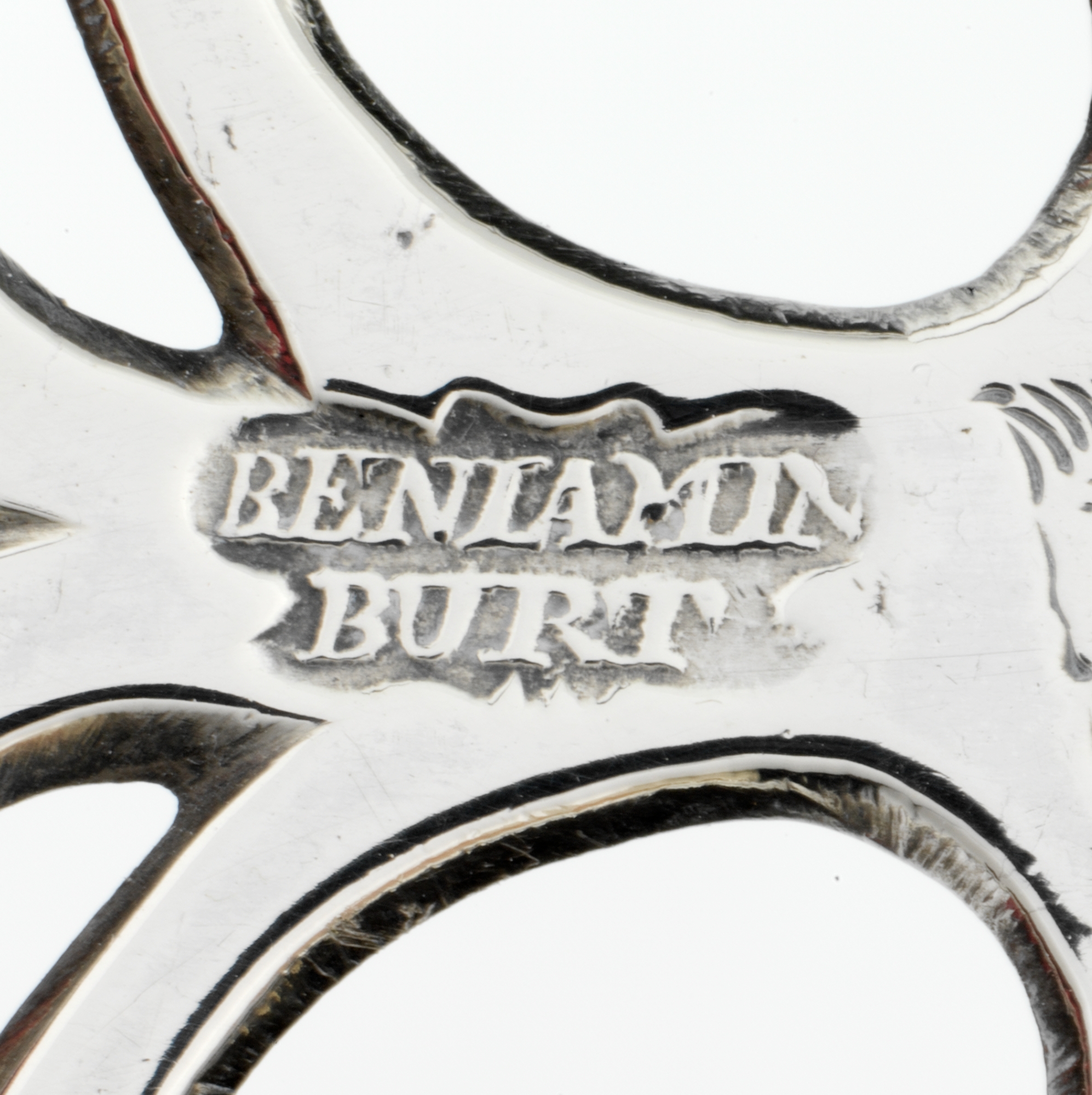Porringer
Benjamin Burt American
Not on view
Beginning around 1725, the so-called keyhole pattern became the most popular design for porringer handles. Its name derives from the keyhole- or teardrop-shaped piercing at the tip of the handle.
This particular porringer was made by the prolific Boston silversmith Benjamin Burt as part of a large order of silver placed by Providence, Rhode Island merchant Moses Brown (1738–1836) prior to his 1764 marriage to his cousin Anna Brown (1744–1773). Anna’s wedding silver was secured through an inheritance she received from her father—and Moses’s uncle—Obadiah Brown (1712–1762). Surviving correspondence documents the order for this silver from Burt, as well as Burt’s subcontracting of the engraving to fellow Boston silversmith and engraver Nathaniel Hurd (1729/30–1777). The engraving on the handle of the Brown family crest and the inscription OB to AB commemorates the generous bequest of Obadiah Brown to his daughter, Anna Brown.
Due to rights restrictions, this image cannot be enlarged, viewed at full screen, or downloaded.
This artwork is meant to be viewed from right to left. Scroll left to view more.




